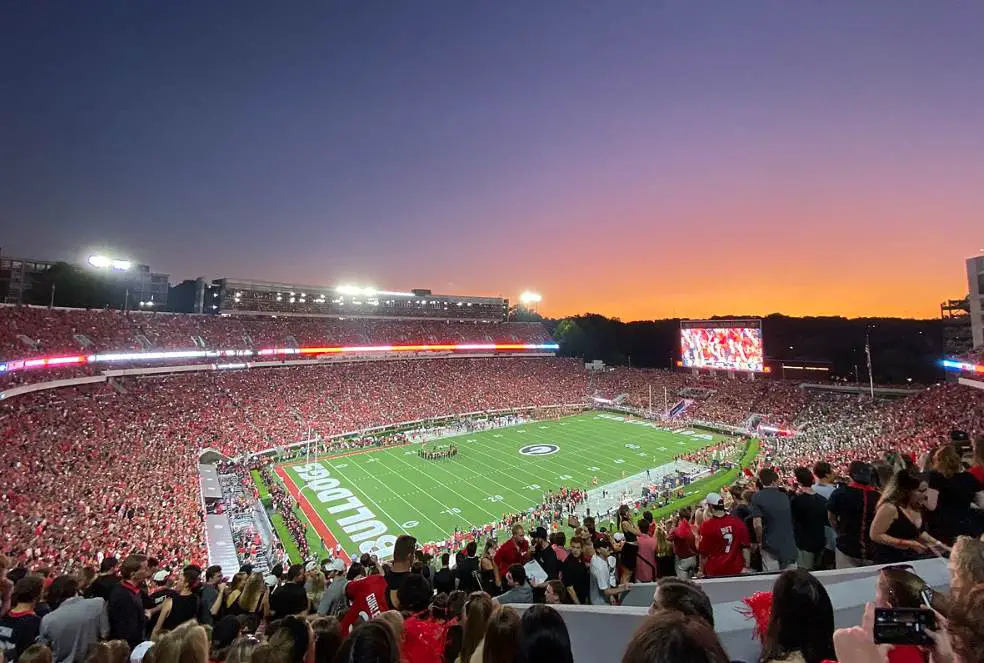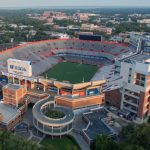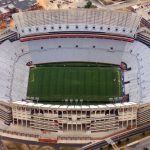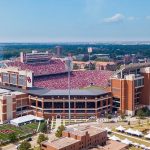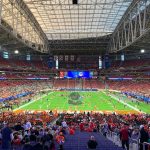Very few stadiums in the US are as beautiful as this one in a relatively small college town in the U.S. state of Georgia.
This particular stadium has a history that dates back to the 1920s, and after several expansion phases, has become one of the biggest stadiums in the world.
In this article, you’ll discover some of the most interesting facts about Sanford Stadium, one of the most stunning stadiums in the country.
1. It’s located on the main campus of the University of Georgia
Sanford Stadium is an on-campus stadium in Athens, Georgia. It’s located right in the middle of the campus of the University of Georgia.
It has been the home venue of the Georgia Bulldogs football team since it first opened in the year 1929.
Athens is a relatively small city with a population of just shy of 130,000 people. It has been the home of the main campus of the UGA since its foundation in 1785.
With a history of well over 2 centuries, the Unversity of Georgia is one of the oldest in the country. It’s also frequently ranked as one of the best in the United States.
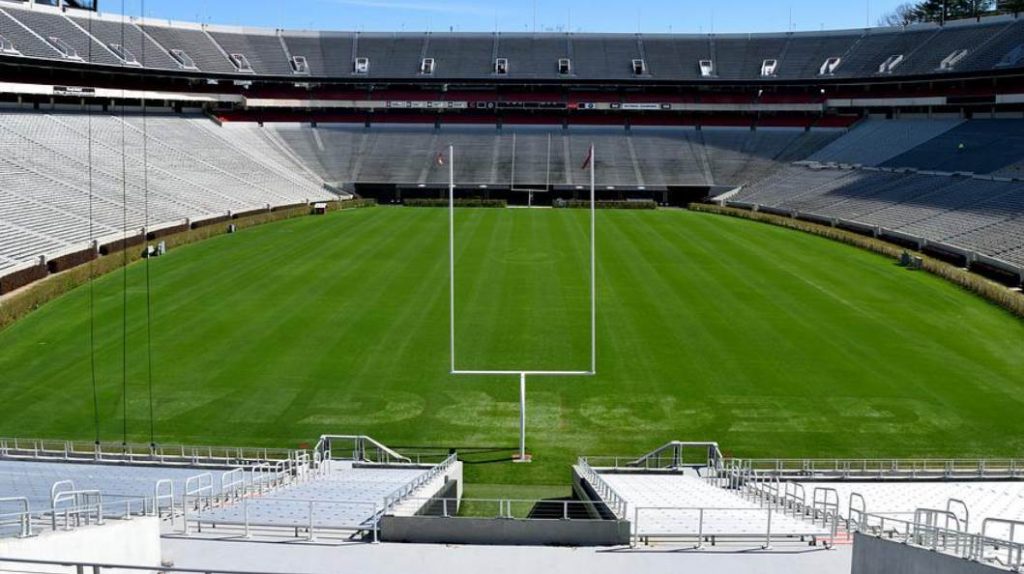
2. The stadium was named in honor of a former President of the University
The Georgia Bulldogs played their first season in the year 1892. Today, they compete in both the Football Bowl Subdivision (FBS) of the National Collegiate Athletic Association (NCAA) and the Eastern Division of the Southeastern Conference (SEC).
One of the major forces behind the athletics divisions of the University of Georgia was Dr. Steadman Vincent Sanford (1871-1945).
He had earned a Bachelor of Arts in English in 1890 and after serving as the principal and superintendent of some schools in Georgia, he came to UGA to teach English.
He eventually made it to the Chancellor of the university system in Georgia in 1935 and constructed numerous schools in the state during his time.
He also became the chairman of the athletics division in 1907 and the stadium was named in his honor.
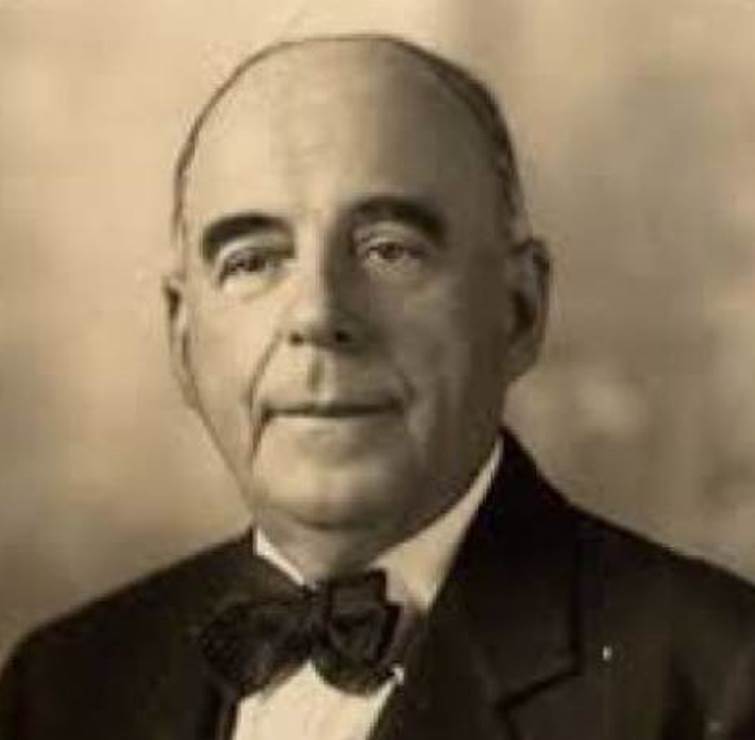
3. The stadium replaced an older on-campus playing field in 1929
The team played their first games at Herty Field, an area in the center of the campus. The baseball team also played here during these years in the late 19th and early 20th centuries.
As the popularity of the games grew, this playing field became outdated and they moved to Sanford Field in 1911.
This stadium featured wooden stands and was nothing compared to the massive stadium that stands just nearby today. It was used by the football and baseball teams of the UGA between 1911 and 1929.
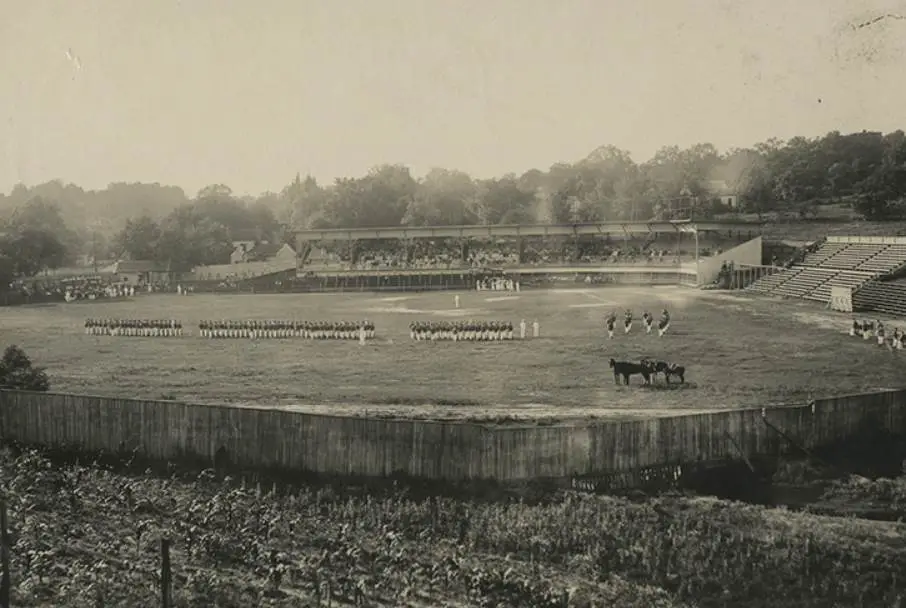
4. The stadium was constructed in 1929 because of a nearby rival
Athens is located about 70 miles (110 kilometers) northeast of downtown Atlanta, the capital and most populous city in Georgia.
The proximity of the city has spurred a rivalry between the Georgia Bulldogs in Athens and the Georgia Tech Yellow Jackets football teams.
Both teams were established in 1892 which means they have a long-standing history of heated games with each other.
Georgia Tech has played its games in this location just north of downtown Atlante since 1905. The first stadium was completed in 1913.
By 1925, the Bobby Dodd Stadium at Historic Grant Field could hold 30,000 spectators, a lot more than the wooden stands at Sanford Field.
Because of this, the games between both teams were exclusively played in Atlanta. Efforts from Sanford to secure a loan were successful in 1928 as $150,000 was secured for a new stadium that year.
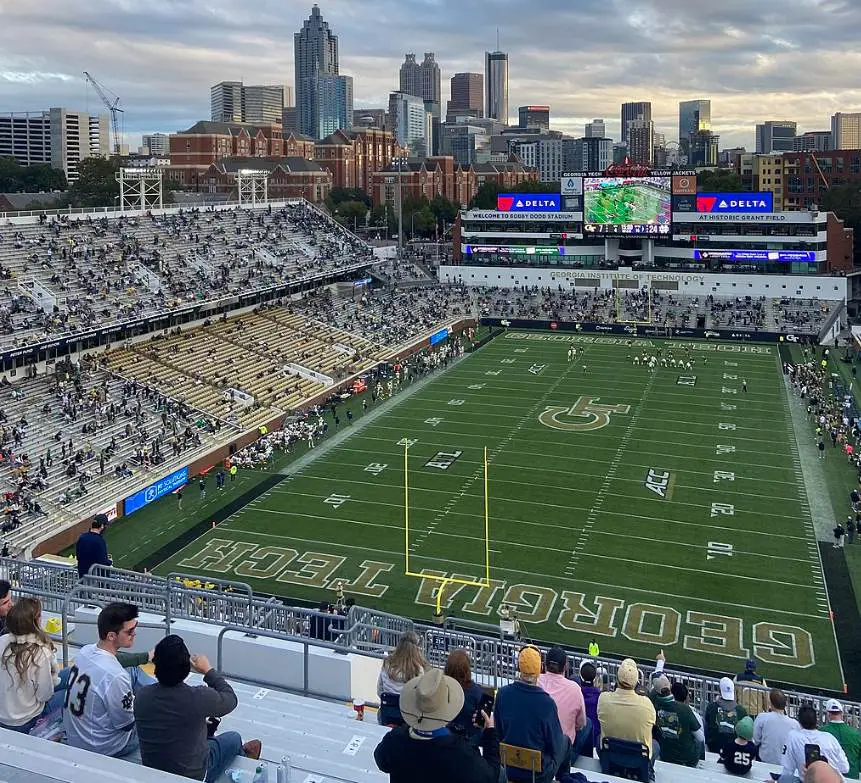
5. The 30,000-seat stadium was constructed inside of a valley to reduce cost
Steadman Vincent Sandford had a dream of building a stadium that could exceed that of Georgia Tech in Atlanta.
Unfortunately, the $150,000 wasn’t able to make that happen. The stadium could still match that at Grant Field as 30,000 people could be seated upon completion.
The stadium was constructed in an open area between North Campus and the Science Campus in the south.
A small creek called Tanyard Creek once flowed through this natural valley. Because of this perfect setting, costs could be reduced by building the stands against the slopes of the small hills on each side.
The downside is that there’s no other way than to climb upward if you want to exit the stadium.
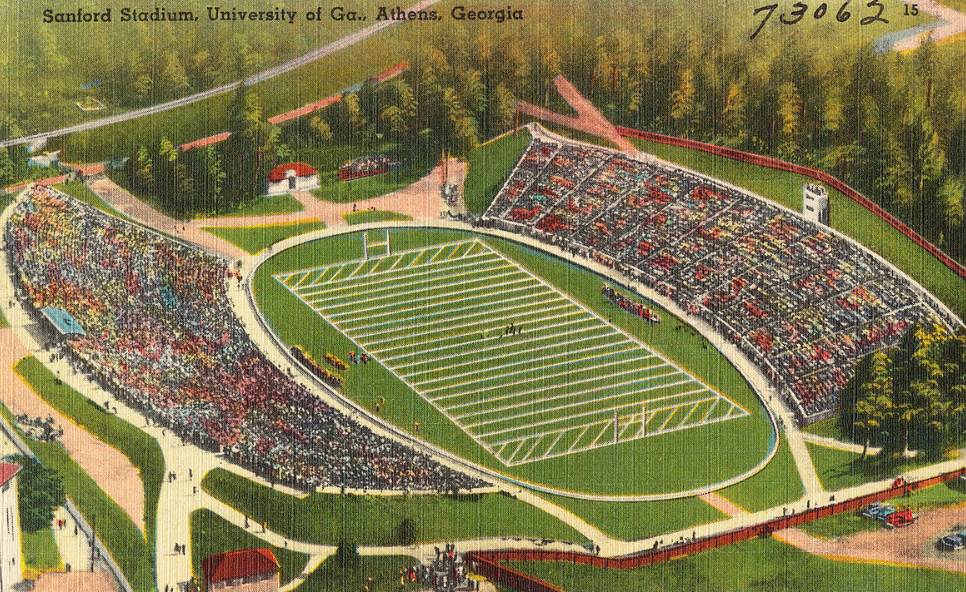
6. The playing field has been surrounded by shrubs since 1929
When you hear commentators mention that games at Sanford Stadium are being played “Between the Hedges,” they aren’t referring to shrubs surrounding the stadium itself.
The playing field is really surrounded by privet hedges, a type of shrub that can be found all around the world.
These hedges have been present around the field ever since the stadium first opened its doors.
The field itself features a natural surface as well as it has been planted with Tifton 419 Bermuda Grass. It’s one of only 10 NFL stadiums that feature this type of surface.
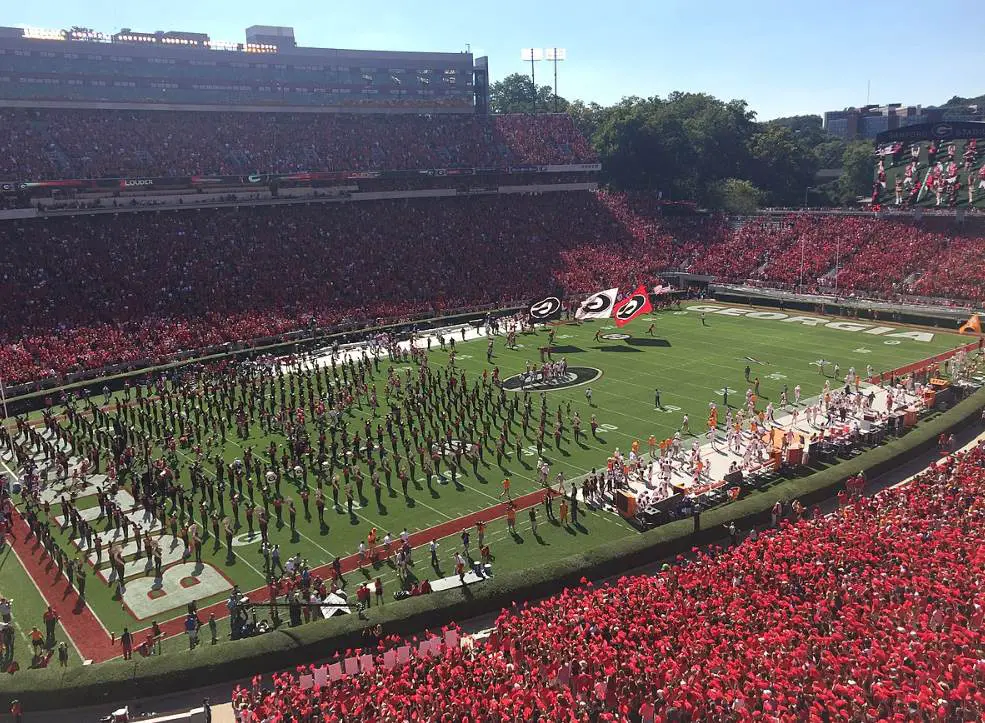
7. The stadium didn’t have a horseshoe design until the early 1980s
The original version of the stadium featured the lower half of the current grandstands of the stadium. It remained like this until the first expansion project was completed in 1949.
The stadium has been expanded multiple times throughout the 20th century and reached a capacity of 82,122 in 1981.
This was one of the major expansion phases because it completely enclosed the east end zone, an area that was still completely open until then.
This project cost $11.5 million to complete in the early 1980s. It finally ended the so-called “Track People,” spectators who could enjoy the game for free from this angle.
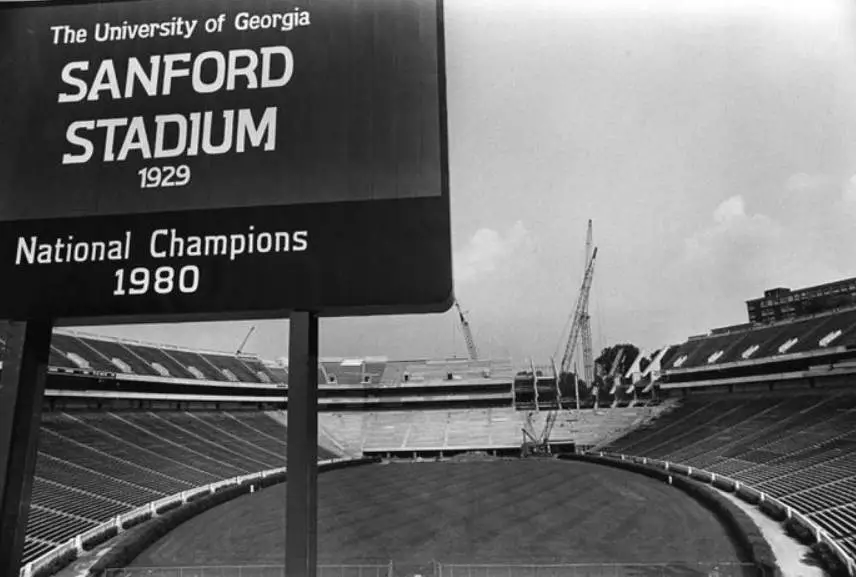
8. Sanford Stadium reached its current capacity in 2019
The stadium was expanded 5 more times between 1981 and today. These projects were completed in 1991, 1994, 2000, 2003, and 2018.
The final project cost $63 million to complete and resulted in a complete renovation of the west side of the stadium. The locker rooms were moved here and a plaza was established in front of it.
The current capacity of the stadium is 92,746, making it the 9th-largest stadium in the United States and the 14th-largest stadium in the world.
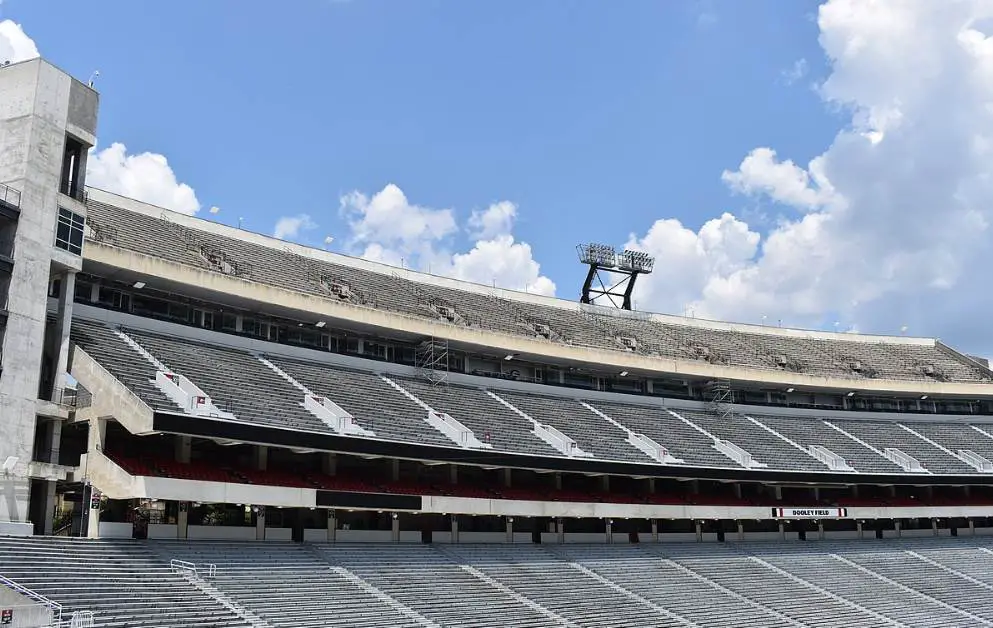
9. It hosted the final of the 1996 Summer Olympics soccer games
The 1996 Olympic Games took place in Atlanta and the stadium in Athens played a major role in bringing the games to Georgia.
The stadium hosted both the men’s and women’s medal games of the 1996 Summer Olympics, tournaments won by Nigeria and the United States respectively.
One of the most intriguing facts about Sanford Stadium is that this was the only time in its history that the shrubs around the playing field were removed.
A soccer field is wider than a football field so there was no other option than the temporarily remove the hedges. 3 years earlier, the process of growing new hedges had been started in a secret location and they were replaced after the tournament.
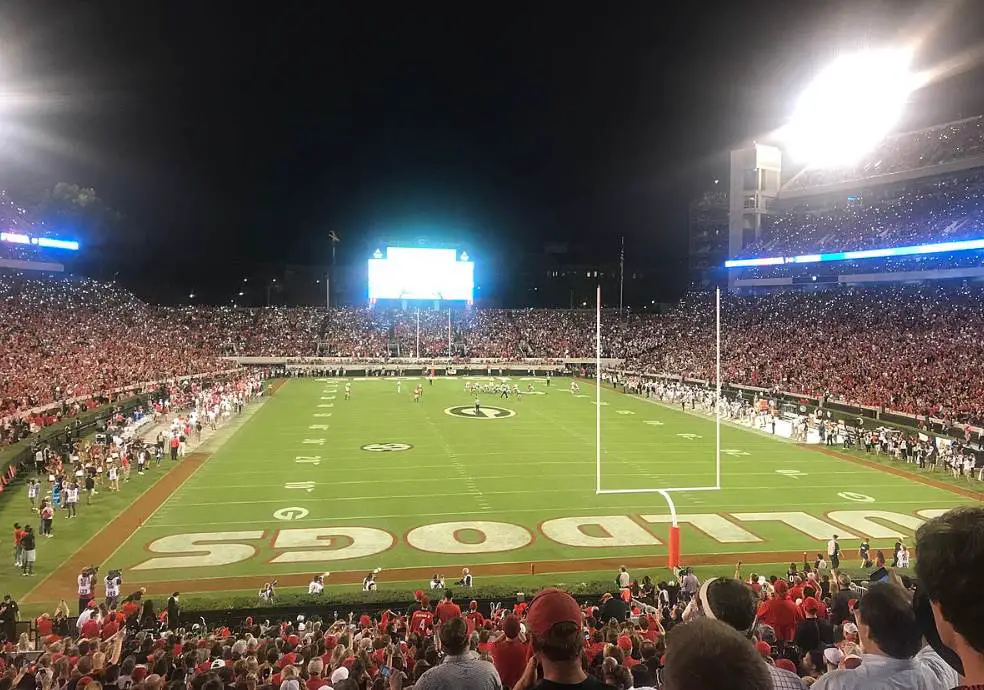
10. The amazing stadium has one of the best atmospheres in the country
The unique location inside a natural valley makes Sanford Stadium one of the most beautiful on-campus stadiums in the United States.
The stadium has also been described as one of the “best, loudest, and most intimidating atmospheres in college football.”
Yes, this is truly an amazing stadium to enjoy a great game of football!
